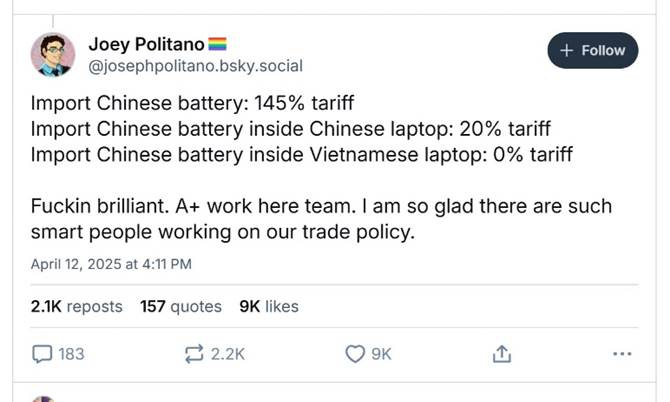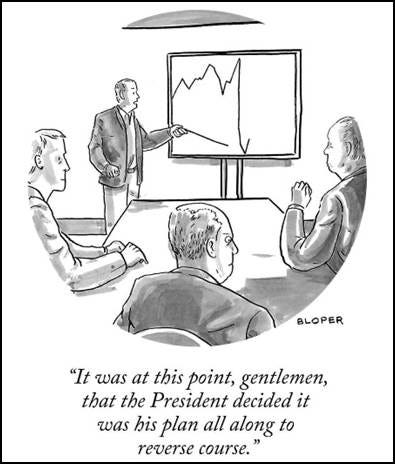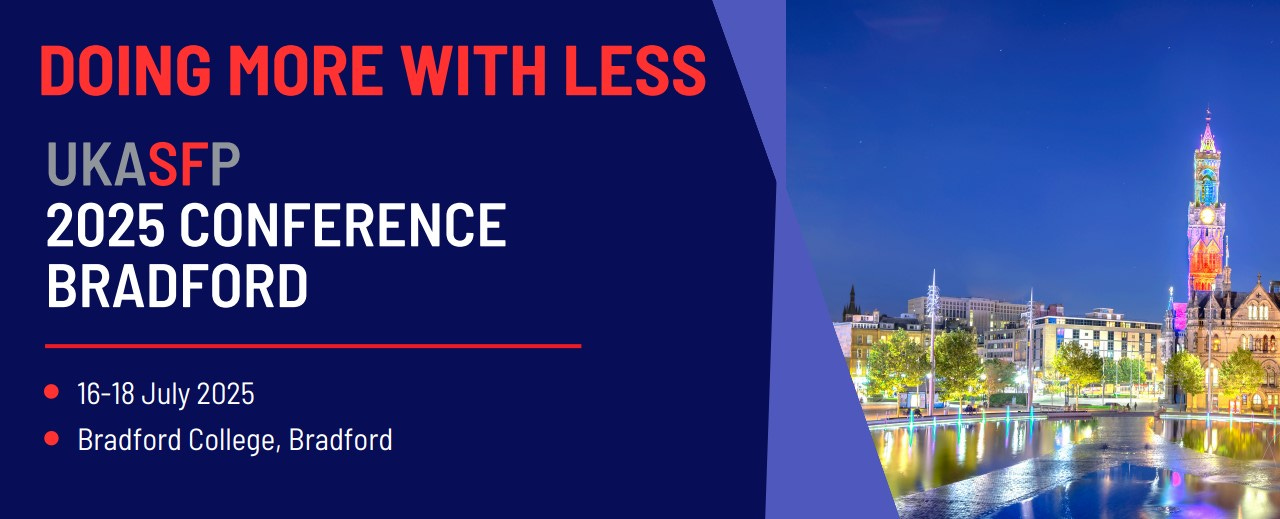81. The message and the meta-message
How you act is even more eloquent that what you say - as recent events demonstrate
Many years ago when we were writing The Solutions Focus book in its original form, Paul Z Jackson and I used to deliver Advanced Presentation Skills courses to trainers and business people. I like to think they were pretty good and well ahead of the field; we covered all kinds of things including seven different structures, spontaneity, metaphor, warming up and answering questions – and the distinction between message and meta-message.
We used this Rowan Atkinson performance of ‘The Best Man’s Speech’ (in audio form at the time, though it’s now easy to see it as well) as an example of the importance of the ‘meta-message’. Take a look, it’s only three minutes.
The message – what this particular ‘best man’ is saying - is a series of feeble jokes, much in the style of a best man’s speech. But what is the meta-message? What do we learn not from what he says, but the way that he says it? Unprepared, rude, careless… of course it’s very funny as a comedy act but seriously. And what does it say about the bridegroom who has selected this person in a key role on his wedding day? Is this really the best man? Either he has a very limited set of friends or his judgement is catastrophically adrift. Or both.
The meta-message – a level up
The concept of a meta-message was introduced by Gregory Bateson, systems pioneer, one of my heroes and the person whose work I nod to in the title of this series of article Steps To A Humanity Of Organisation. We can take a simple dictionary definition as a starting point:
A meta message refers to an implicit message that can be inferred from what someone is saying, often conveying a message about the message itself. It is typically reflected in the manner of communication, especially through nonverbal cues such as tone of voice. In essence, a meta message provides context and deeper meaning beyond the explicit content of the communication.
Bateson introduced this term in 1951. He had been observing animals including monkeys at the zoo as part of his project about communication (along with John Weakland and others) and noted that sometime the monkeys fought, and sometimes they played at fighting. He figured that there must be some kind of higher-level communication at work which helped the monkeys to tell the difference between real fights and play fights. This is not some kind of ethereal ‘sensing’, it’s a (possibly subtle) part of how the participants are communicating.
And indeed this kind of thing plays out in human communications too. There is a difference between ‘I’m teasing’ and ‘I’m serious’, or I’m being straight’ and ‘I’m exaggerating’. In British English there is a lot of use of understatement to emphasise meaning, which can be confusing to those not versed in the art. This is often done for fun, as a knowing nod; for example “This food is… interesting” which means it’s awful. The pause is important too, for the full effect.
While this is a bit of fun, there can be serious consequences. On April 22 1951, 650 soldiers of the 1stBattalion, the Gloucestershire Regiment, were confronted by as many as 10,000 Chinese soldiers, during the struggle to secure access across the Imjin River during the Korean War.
In the midst of the ensuing battle, with ammunition running perilously low, Brigadier Thomas Brodie took a radio call from an American Major-General, enquiring about the regiment’s condition. Brodie told him that things were
“A bit sticky, things are pretty sticky down there.”
Taking Brodie’s colossal British-style understatement literally, the American chose to defer sending relief until the following morning. Only forty of the Glosters survived to tell the tale.
Meta messages that didn’t line up
I remember seeing a poster in the Bristol University students union in the early 1990s. It announced a workshop on ‘Success: How to achieve your life goals’ by someone called Rafael. We didn’t have phone cameras in those days, so I can’t show you the poster; hand written, scribbly writing, one sheet of A4, crumpled… If this is a guy who knows how to achieve not just his own life goals but yours as well, he clearly didn’t have high aspirations about the look of his materials.
Another kind of meta-message I used to look for was a match-up between a company’s stated purpose and the quality of their office environment. I went into a medical supplies company once, to find not clinical cleanliness and organisation but dirt, mess, teetering piles of stuff on the floor and a general air of chaos. I bought the thing I wanted (a model of the brain I still have) and left. I wasn’t surprised to hear that the company was out of business a couple of months later.
The same thing can happen in training rooms. If you go in to find rows of desks looking at a lectern and screen with large piles of files on the tables, that doesn’t bode well for an enjoyable learning experience. I am most encouraged to find group tables with colourful materials, music and a warm welcome.
In the world of academia when I was doing physics in the 1980s, many academics used to make a show of turning up with armfuls of overhead projector slides in no particular order (this being pre-PowerPoint), being generally unprepared and then over-running their time slot dramatically. This may well have been a kind of counterblast to slick presentations which might be viewed as manipulative and smarmy. A kind of modern version appeared with former UK prime minister Boris Johnson, who would deliberately tousle his hair and stumble over his words. Occasionally even he was rumbled, as with his fumbling attempts to talk to the Confederation of British Industry about his visit to Peppa Pig World in 2021.
And of course – Trump’s tariffs
So why am I writing about this topic this week? The only story this week is Donald Trump’s on-off will-he-won’t-he application of nonsensical taxes on trade. Just under two weeks ago, Trump stood in the Rose Garden at the White House and waved around a board which he alleged contained trade-balancing tariffs on most other countries (including uninhabited islands). On the campaign trail he said he’d do this. Nobody quite knew how or what exactly, but tariffs would make America rich again. These taxes were for real, they were here to stay. Markets plummeted at the news.
Except that, of course, they weren’t. A matter of days later, he suspended them for 90 days (with the exception of China). Markets rebounded. Then over the weekend came another announcement, that the tariffs wouldn’t apply to iPhones and laptops. Which sets up all kinds of perverse incentives like wildly different rates on batteries depending on how precisely they are routed to their markets (like this from Joey Politano on Bluesky).
Trump’s message is still that tariffs will magically make America great again (by encouraging manufacturers back to the USA) while simultaneously (and contradictorily) raising billions of dollars by charging American importers (and ultimately US citizens). His message is confused. But what about the meta-message? It looks to me like:
I have no idea how tariffs or international trade function
You can’t trust anything I say
I’m much less in control than I like to appear.
It seems to be summed up by this New Yorker-style cartoon this week:
And if you want a level-headed view on quite where Trump and friends are now about trade, please take a moment to read economist Paul Krugman’s take today on Substack: “Why Trump will lose his trade war”. TLDR - he doesn’t know what he wants, let alone how to get it and his credibility with the rest of the world is shot to pieces.
Conclusions
What’s the meta-message people get when they walk into your organisation? Into your workshops or trainings? Into your presence? In a humane and effective organisation, alignment of messages and meta-messages pays dividends in terms of clarity, trust and being taken seriously. Unlike Donald J Trump.
Dates and Mates
I will be giving a rare face-to-face two day workshop on Solution Focus 2.0 and Host Leadership on May 1-2 in Munich, Germany with my dear friends and colleagues Matthias Varga and Insa Sparrer. There are a few places left - full details here.
The UK Association for Solution Focused Practice conference 2025 is lining up to be very interesting. It’s in Bradford on 16-18 July 2025, in the Bronte theatre of the new David Hockney building at Bradford College. The full programme of plenaries, keynotes, workshops and other events is now online - click here. I am leading a workshop discussion on Writing SF, so bring your projects (real or nascent) along to think about how and where you might get them into print.
I highly recommend Paul Krugman’s Substack for takes on what on earth is going on in the USA these days. It’s mostly free to read.







